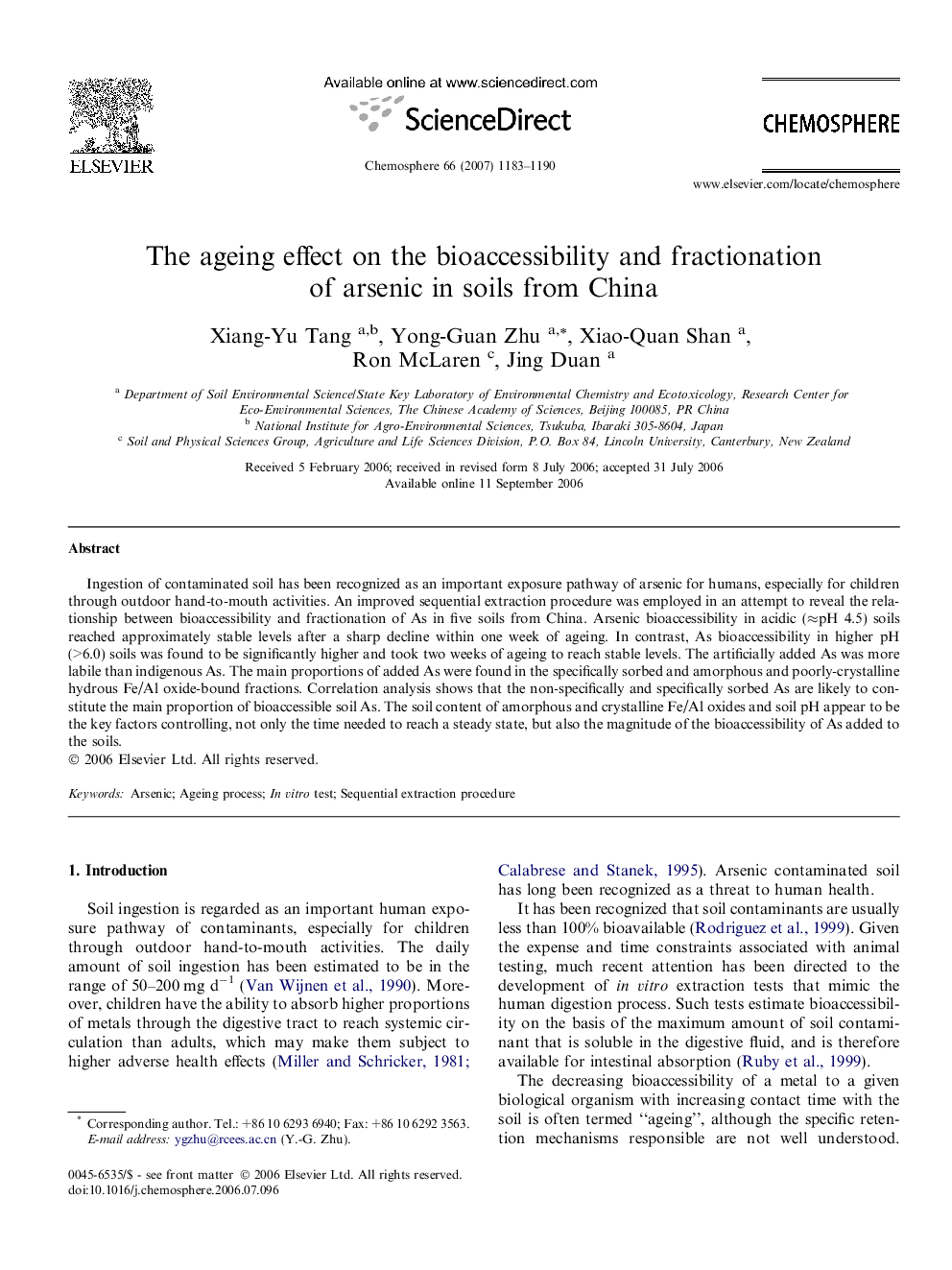| Article ID | Journal | Published Year | Pages | File Type |
|---|---|---|---|---|
| 4415288 | Chemosphere | 2007 | 8 Pages |
Ingestion of contaminated soil has been recognized as an important exposure pathway of arsenic for humans, especially for children through outdoor hand-to-mouth activities. An improved sequential extraction procedure was employed in an attempt to reveal the relationship between bioaccessibility and fractionation of As in five soils from China. Arsenic bioaccessibility in acidic (≈pH 4.5) soils reached approximately stable levels after a sharp decline within one week of ageing. In contrast, As bioaccessibility in higher pH (>6.0) soils was found to be significantly higher and took two weeks of ageing to reach stable levels. The artificially added As was more labile than indigenous As. The main proportions of added As were found in the specifically sorbed and amorphous and poorly-crystalline hydrous Fe/Al oxide-bound fractions. Correlation analysis shows that the non-specifically and specifically sorbed As are likely to constitute the main proportion of bioaccessible soil As. The soil content of amorphous and crystalline Fe/Al oxides and soil pH appear to be the key factors controlling, not only the time needed to reach a steady state, but also the magnitude of the bioaccessibility of As added to the soils.
